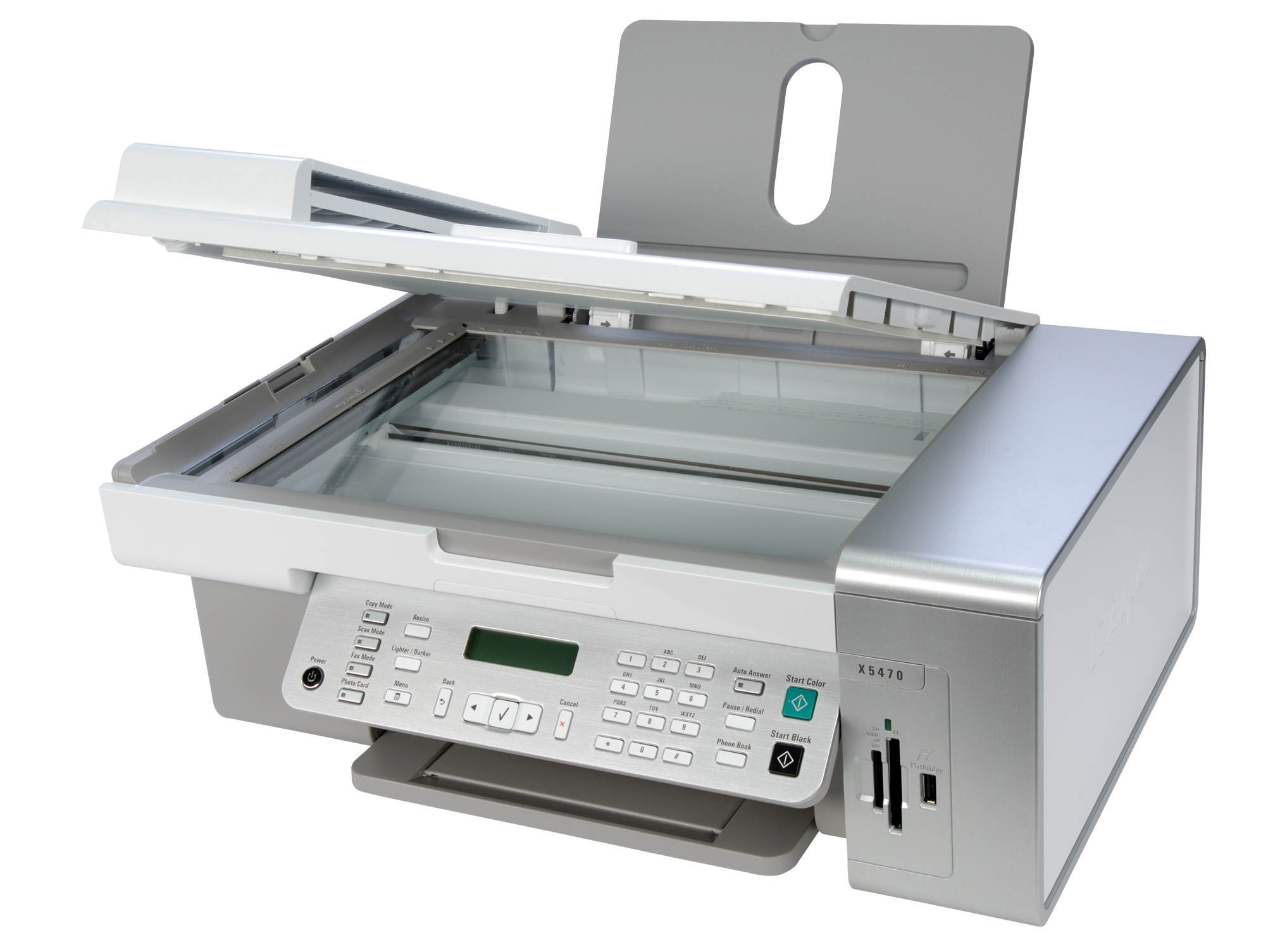TechRadar Verdict
Its features are the selling point but the overall quality lets it down
Pros
- +
Clever paper auto-sensing
It is cheap
Cons
- -
Wonky printing
Smudging
Poor photo quality prints
Slow print speeds
Why you can trust TechRadar
First impressions are often correct. As such, a quick glance through the Lexmark's X5470 impressive-looking feature list and specifications might have you scurrying for your credit card.
For example, the printer has a built-in memory card reader and PictBridge port for direct photo printing, as well as a reasonably high-resolution 600 x 1,200dpi CIS flatbed scanner for photocopying.
The X5470 also boasts an ADF (auto document feeder) fitted as standard. This is useful not only for multi-page photocopying but also for faxing, taking full advantage of the printer's built-in standalone fax facilities. The X5470 is starting to look, quite literally, good on paper.
There are parts of the design that we like the look of. For example, compared with many of its competitors, mostly from HP, the ADF unit is particularly neat and tidy. It uses the lid of the scanner as its base plate and generally doesn't stick out like a sore thumb.
In practice, however, the minimalist approach seemed to result in the paper not being held true as it passed through the automatic feed system, as all our photocopies made using the ADF came out on the slant at varying degrees.
Four modes
The printer works in any of four main modes: copy, scan, fax and photo card. The standalone control system, which relies on a wide range of buttons and a two-line mono text LCD display, works with variable success.
There are some clever features built in, for example auto-sensing for the type of paper you're using, but the menu itself is confusing in places. It's not too bad in fax and copy modes, but when printing photos from memory cards it's downright arcane and some of our testers ended up with rather different sizes and layouts of prints than they were expecting.
Getting back to the subject of the fax, which is based around a built-in 33.6k modem, there are straightforward options for pause and redial, auto-answer and quality settings. You also get a phone book, into which you can enter up to 99 numbers.
Number options even extend to the inks used in the printer, because you can swap out the mono cartridge for an optional photo cartridge, extending the ink range from four inks to six. The trade-off is that black text looks grey in this mode, running costs are more expensive and photo prints take considerably longer to output.
Even with the basic four-ink line-up, the X5470 is very slow, taking well over five minutes in our tests to output two 10 x 15cm prints on a single sheet of glossy A4, either from a CompactFlash card, PC or via the scanner in colour photocopy mode.
Photo quality proved the wrong side of average, especially in colour photocopy mode, with prints being slightly wishy-washy. The results are certainly no match for the latest round of Canon and Epson photo printers or all-in-ones.
Even using genuine Lexmark Premium photo paper, photos are also susceptible to smudging from errant drops of water. In this respect, again, they're not nearly as robust as Canon or Epson prints, although still very much better than those from an HP inkjet. Overall, the Lexmark is cheap considering all its features, but its lack of performance and quality let it down.
Tech.co.uk was the former name of TechRadar.com. Its staff were at the forefront of the digital publishing revolution, and spearheaded the move to bring consumer technology journalism to its natural home – online. Many of the current TechRadar staff started life a Tech.co.uk staff writer, covering everything from the emerging smartphone market to the evolving market of personal computers. Think of it as the building blocks of the TechRadar you love today.
